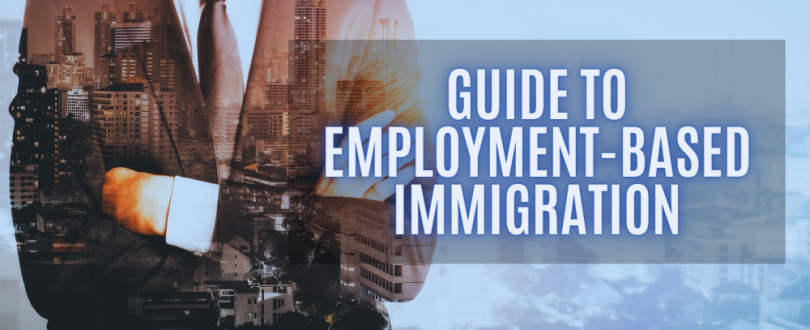
Navigating the complexities of immigration can be challenging, especially for those seeking employment-based opportunities in the United States. This blog post aims to demystify employment-based immigration and explain the PERM (Program Electronic Review Management) process, providing valuable information for travelers and potential immigrants.
Overview of Employment-Based Immigration
Employment-based immigration allows individuals to obtain permanent residency in the U.S. through employment opportunities. The U.S. offers several categories of employment-based immigration, each tailored to different types of workers:
EB-1: Priority Workers
This category is for individuals with extraordinary abilities, outstanding professors or researchers, and multinational executives or managers.
EB-2: Professionals with Advanced Degrees or Exceptional Ability
This category includes professionals with advanced degrees or those with exceptional abilities in the sciences, arts, or business.
EB-3: Skilled Workers, Professionals, and Other Workers
This category covers skilled workers with at least two years of training or experience, professionals with bachelor’s degrees, and other workers for unskilled labor.
EB-4: Special Immigrants
This includes certain religious workers, employees of U.S. foreign service posts, and other special categories of immigrants.
EB-5: Immigrant Investors
This category is for investors who make a substantial investment in a new commercial enterprise in the U.S. that creates jobs for U.S. workers.
Employment-based immigration provides significant benefits, including the ability to live and work in the U.S. permanently and the potential for family members to also obtain residency.
Introduction to PERM
The PERM process, managed by the U.S. Department of Labor (DOL), is a crucial step in obtaining an employment-based green card for most EB-2 and EB-3 categories. PERM stands for Program Electronic Review Management and involves obtaining labor certification to ensure that hiring a foreign worker will not adversely affect the wages and working conditions of U.S. workers.

Steps Involved in the PERM Process
Step 1: Prevailing Wage Determination
The prevailing wage determination is the first step in the PERM process. Employers must obtain a prevailing wage determination from the DOL to ensure they offer a wage that meets or exceeds the average wage for the specific job in the geographic area. Factors considered include job duties, level of experience, and geographic location.
Step 2: Recruitment
Employers must undertake a recruitment process to test the U.S. labor market for qualified U.S. workers. This involves:
- Posting job advertisements in newspapers, on job boards, and internally.
- Conducting interviews with applicants.
- Documenting the recruitment process and results.
The recruitment period typically lasts for 30 to 60 days, and employers must keep thorough records to demonstrate their efforts.
Step 3: Filing ETA Form 9089
If no qualified U.S. workers are found, the employer can file ETA Form 9089 with the DOL. This form details the job offer, recruitment efforts, and the foreign worker’s qualifications. Ensuring accuracy and completeness is critical to avoid delays or denials. Processing times can vary, but applicants should be prepared for a waiting period.
Post-PERM Process
Labor Certification Approval
Once PERM certification is approved, the employer can proceed with filing Form I-140, Immigrant Petition for Alien Worker, with U.S. Citizenship and Immigration Services (USCIS). In some cases, concurrent filing with Form I-485, Application to Register Permanent Residence or Adjust Status, is possible if visa numbers are available.
If PERM is Denied
If the PERM application is denied, employers have options for appeal and reconsideration. Understanding the reasons for denial and addressing any issues is essential for a successful appeal.

Common Challenges and Tips
The PERM process can be complex and fraught with challenges, such as:
– Ensuring job descriptions are precise and meet the requirements.
– Maintaining proper documentation and records.
– Adhering to recruitment and advertising guidelines.
Seeking professional legal assistance can significantly increase the chances of a successful application. Immigration attorneys can provide invaluable guidance and help navigate potential pitfalls.
Recent Changes and Updates
Immigration policies and procedures are subject to change. Staying informed about recent updates to the PERM process and employment-based immigration policies is crucial. Regularly check official government websites and reputable news sources for the latest information.
Understanding employment-based immigration and the PERM process is essential for those seeking to live and work in the U.S. The process, while detailed and rigorous, offers a pathway to permanent residency and numerous opportunities for skilled workers.
If you need assistance with your visa application, we can provide expert guidance to ensure a smooth process. They offer comprehensive support to help you understand and navigate the requirements, making your application experience less stressful and more efficient.

